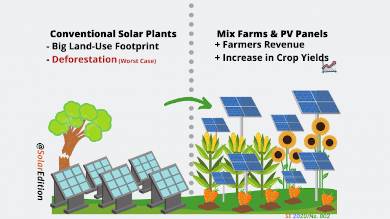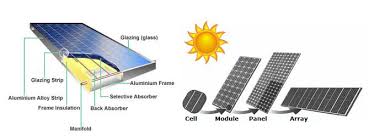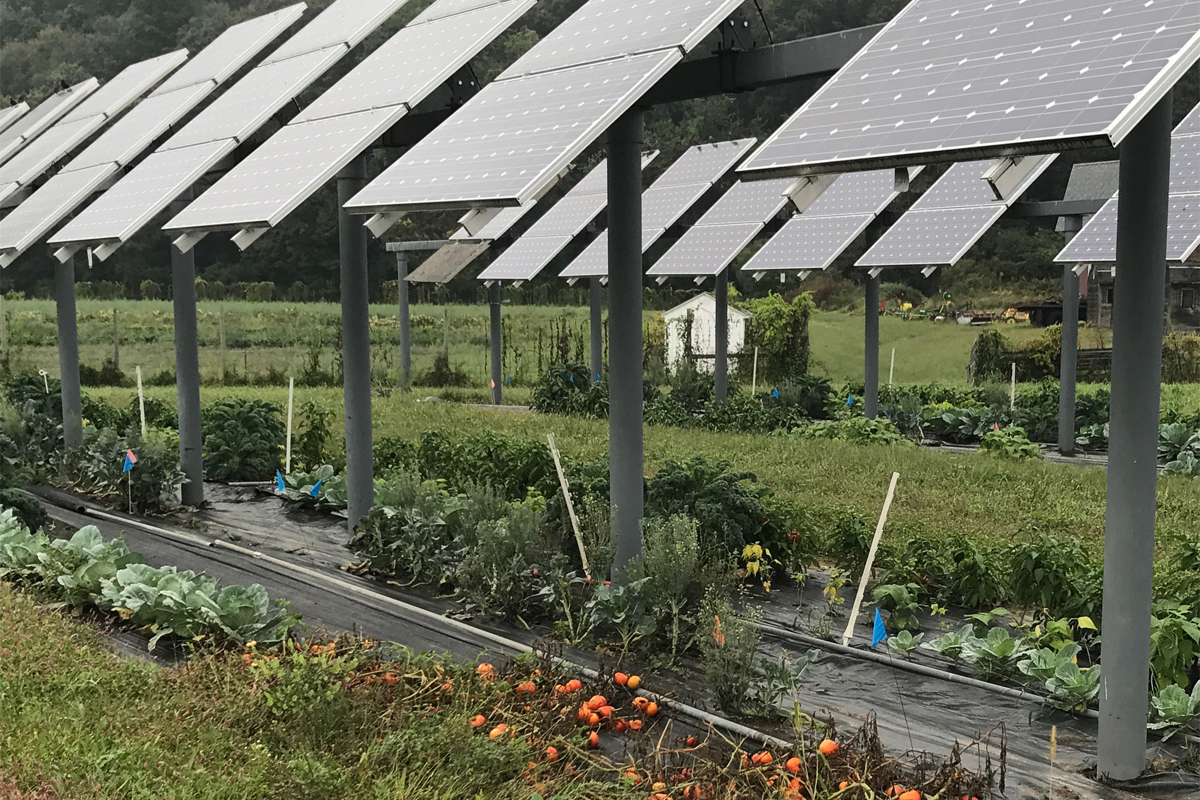We need community-determined development of renewable-energy power generators. We also need to prioritize local residents’ needs, land stewardship, and nature conservation, along with profitability [ 6 ].

As countries around the world start planning and implementing alternatives for generating energy, communities in cities, towns and rural areas might find those generators coming to a farm, rooftop or hill near them. Some might learn they’re great candidates for solar or wind farms. Others might be good sites for pump storage, or in the near future, other emerging types of energy generation technologies.
At minimum, knowledgeable community representatives need a seat at the planning table, so they can work in partnership with energy developers. Even better, community representatives should proactively plan for local alternative energy generation, with residents’ needs, land stewardship, nature conservation, and fiscal responsibility and profitability all top of mind [ 7 ].

Solar farms by collaborative design. Working together, communities and developers should consider solar farm designs that accommodate community needs, including support for agrivoltaics [ 5 ]; a distributed design, with many small solar farms instead of one huge farm; wildlife thoroughfares; wildfire mitigation; water recycling for cleaning panels; materials and electronics recycling; and more. With a focus on partnership that supports good communication, education and participation, together community leaders and solar farm developers can drive good planning and system design, which, not surprisingly, is also good business.

Good information supports good decisions
Good decisions are based on complete, valid information. This website, gorge.solar, will provide verifiable information from credible sources about solar energy generation. It will provide information about the technology, manufacturing, and use of solar panels, inverters and batteries. Recycling and proper disposal, the end-of-life-cycle issue that’s often over-looked, will be covered in depth. This site will also provide information about actual real issues, actual problems, solutions, benefits, and possibilities.
A summary example of the type of information to be covered in depth on gorge.solar is titled The truth about solar panels—do the pros outweigh the cons? and referenced by [ 4 ] below.
The following topics will be developed in detail, based on international data collection and related studies about the solar industry (checked ✅ topics are ready to read; top-left mouse-over menu shows  for recently completed topics).
for recently completed topics).

- ✅ Overview
- ✅ Agrivoltaics—Solar Farms on Farms
- ⏽ Manufacture, Use, and Recycling
- ⏽ Air and Water Pollution
- ✅ Solar Panels—Are They Fire Hazards?
- ⏽ Environmental Impact
- ✅ Impact on Property Values
- ⏽ Electromagnetic Effects—EMF and EMH
- ⏽ Proposed Code Requirements—County, State, or Federal
- ⏽ Possible Alternatives to Large Solar Farms
- ⏽ Large-Scale Energy Storage
- ⏽ How Solar Works—A Primer
- ⏽ The Grid—The Internet of Electrical Energy
Only the facts, please. And the author won’t “cherry-pick” facts to bias readers. The author’s opinions will be stated as such or expressed in an “opinion section.” Everything else will reference sources, including international studies from the U.K., Germany, Japan, Australia, and the U.S. regarding solar-related issues. For each topic, there's a list of references, including, at the end of the list, suggested Google search terms for DIY Research (Do It Yourself Research).
Maybe the best decision will be to terminate development of the solar farm project altogether. If that’s the decision, it should be based on comprehensive factual information; not fear, uncertainty and doubt (FUD), based on misunderstanding.

What do I mean by misunderstanding? Here’s just one example of many that will be covered on this website: People are concerned about lead in solar panels contaminating well water. On the surface, that’s an excellent concern.
However, the existing Restriction of Hazardous Substances Directive (RoHS) regulates, minimizes, or eliminates use of hazardous materials. The European Union (EU) versions were established in 2002 and 2006 and the California (CA) version in 2007 [ 1 ]. RoHS-compliant PV panels will soon be the only type manufactured [ 3 ]. RoHS-compliant PV panels don’t use lead-based solder, and the ones that still use lead-based solder (not RoHS compliant) have 0.42oz (12gm) of lead per panel. It’s encapsulated in glass, and the panel lasts 25-30 years. It won’t leach out.

By comparison, one small (60Amp-Hour) car battery contains 19 pounds (8.6Kg!) of lead, and that battery only lasts 5 years. There are millions of car batteries—far more than solar panels—disposed of every year. How many are recycled properly? And how many are in land-fills, where the lead can leach into the ground water? [ 2 ].
We live in transformative times. We are shifting to greater reliance on clean electric energy, electric cars, electric trucks, and electric airplanes. The electric energy generation needed in the near future will far exceed the nation’s existing capacity.
Let’s make sure we have a complete understanding of the technology and issues; and let’s put in place the right planning processes now so we can plan for the long-term for our communities to determine how, when, and where to build our much-needed solar power plants.